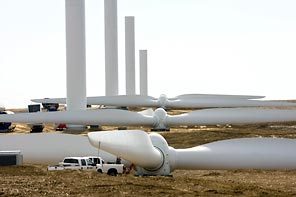forum
library
tutorial
contact

New Electricity Transmission in NW
to Save 85 B Annually
by StaffHuliq News, July 21, 2008
|
the film forum library tutorial contact |

|
New Electricity Transmission in NW
by Staff |
 If the top five planned transmission projects in the Pacific Northwest are not built, the region will lose out on $55-85 billion in economic activity and up to 60,000 jobs annually over the next 25 years, according to a report released today at the Pacific NorthWest Economic Region (PNWER) annual summit in Vancouver, BC.
If the top five planned transmission projects in the Pacific Northwest are not built, the region will lose out on $55-85 billion in economic activity and up to 60,000 jobs annually over the next 25 years, according to a report released today at the Pacific NorthWest Economic Region (PNWER) annual summit in Vancouver, BC.
The study, The Cost of NOT Building Transmission, authored by Idaho National Labs and commissioned by PNWER's Energy Horizons project, points to a number of consequences of not moving forward with needed transmission infrastructure, including:
The Idaho National Lab study was funded by a grant to PNWER's Energy Horizon project from the US Department of Energy as part of an effort to provide State and Provincial policymakers with tools for decision making on energy transmission issues.
The study notes that the PNWER region experienced significant population and economic growth during recent years, and all jurisdictions except for the Yukon Territory are currently experiencing growth at a rate higher than that of the combined Canadian and U.S. population. Because of this rapid growth, critical infrastructures in the energy sector are being overloaded.
According to the study, without new transmission lines, limited availability of additional power will negatively impact local economic and employment growth opportunities.
"The goal of PNWER's Energy Horizon project is to give decision makers a look into the future, to avoid crises like the 2001 California/Enron price spikes, and provide a sound foundation in energy costs for our region's economic growth," said Jeff Morris, Director of PNWER's Energy Horizon project.
The study notes that failing to deliver lower-cost wind, coal, and hydro power to load centres can increase electricity cost 40-50% over the next few years as growth outstrips the increases in power generation and delivery. The report also outlines new generation capacities identified in future planning by utilities, up to 2025, and predicts that the most affordable electricity generation in the Northwest will include:
"The major deliverable from this study is that policy makers across the Pacific Northwest as well as Washington D.C and Ottawa now know the 15 most important electric transmission projects in the Pacific Northwest and what it will cost the economy in jobs and dollars if they are not built," said Morris. "This is not a definitive study of every transmission issue in the Pacific Northwest; it is a conversation starting point on what issues we need to look at in more detail to make sure that our region's energy infrastructure gets to where it needs to be."
About PNWER
The Pacific NorthWest Economic Region (PNWER) is a regional U.S.-Canadian forum dedicated to encouraging global economic competitiveness and preserving our world-class natural environment. Its member states include: Alaska, Alberta, British Columbia, Idaho, Montana, Oregon, Washington and the Yukon. PNWER is recognized by both the United States and Canada as the "model" for regional and bi-national cooperation because of its proven success. PNWER is a respected voice and resource for our region, and provides the public and private sectors a cross-border forum for unfiltered dialogue that capitalizes upon the synergies between business leaders and government who work to advance the region's economic strength and sustainability. To learn more visit www.pnwer.org.
About Idaho National Laboratory
In operation since 1949, INL is a science-based, applied engineering national laboratory dedicated to supporting the U.S. Department of Energy's missions in nuclear and energy research, science, and national defense. Mission: Ensure the nation's energy security with safe, competitive, and sustainable energy systems and unique national and homeland security capabilities. www.inl.gov
learn more on topics covered in the film
see the video
read the script
learn the songs
discussion forum
